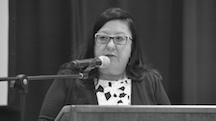
By Mille Lacs Band of Ojibwe, September 18, 2015
The Mille Lacs Band of Ojibwe hosted the Minnesota Indian Housing Conference Sept. 15 and 16 at Grand Casino Hinckley Convention Center. After a breakfast and opening ceremonies involving the Mille Lacs Honor Guard and Timber Trails drum group, attendees were welcomed by Rick Smith of the White Earth Band, who introduced Chief Executive Melanie Benjamin.
In her welcoming comments, Melanie talked about the importance of good relationships with the wider community, and about the importance of family in Indian cultures. She also spoke about the adjustment tribes have had to make over the centuries from their traditional ways of life — based on the circle — to the contemporary society of square houses, lists and “first come, first served.”
Following Melanie’s speech, those in attendance received an update from Mark Butterfield of the Office of Native American Programs Eastern Woodlands
The rest of the conference was devoted to sessions on a variety of topics affecting those working with housing in Indian communities, including homelessness, taxes, development, finances, policy making and drug awareness.
A pre-conference networking/registration and golf event was held during the afternoon of September 14, 2015.
For the complete text of Melanie’s comments, click here or see below.
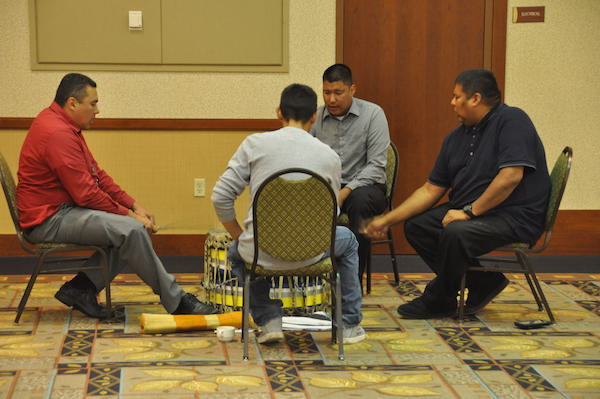
Timber Trails drum group
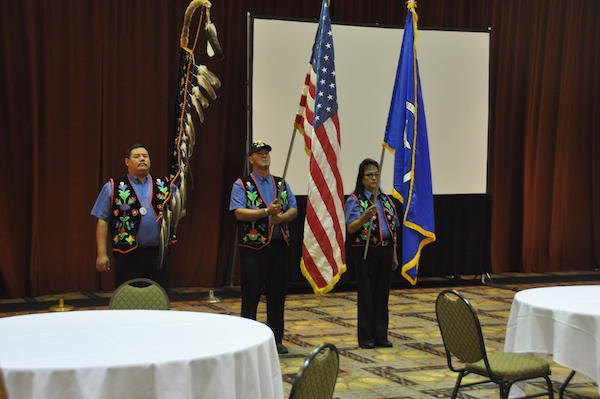
AmVets Post 53 members Allen Weyaus, Tony Pike and Diane Nickaboine
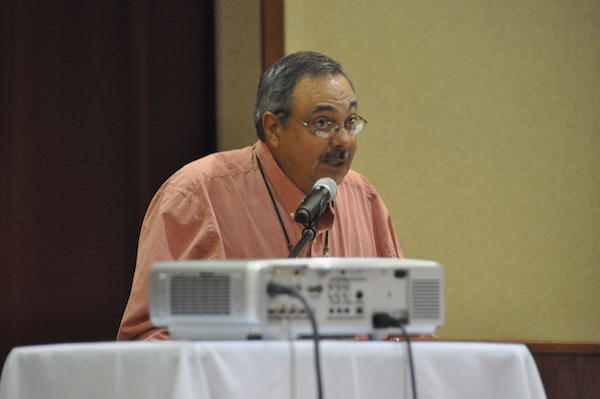
Rick Smith, White Earth Band of Ojibwe
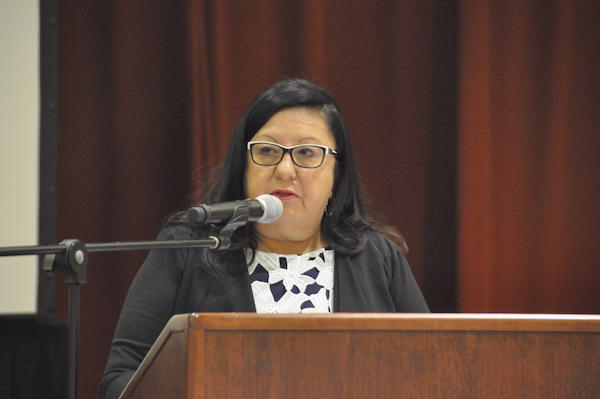
Mille Lacs Band Chief Executive Melanie Benjamin
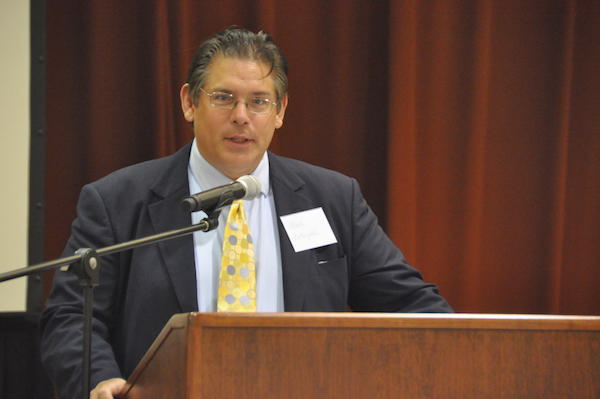
Mark Butterfield, Office of Native American Programs Eastern Woodlands
**MINNESOTA INDIAN HOUSING CONFERENCE
WELCOME REMARKS BY CHIEF EXECUTIVE MELANIE BENJAMIN,
MILLE LACS BAND OF OJIBWE
September 15, 2015 Hinckley, Minnesota**
Aaniin, Boozhoo! Good Morning! It is my honor to welcome you to Grand Casino Hinckley for the Minnesota Indian Housing Conference. Welcome, to the Mille Lacs Band of Ojibwe!
Last Friday, a reporter from a local newspaper emailed my staff. Some of the locals had contacted her, because there was a rumor going around that the Mille Lacs Band was building 300 new homes in the tiny town of Isle, Minnesota. “Is it true?”, she wrote. Our Commissioner of Community Development wrote back, “Divide that number by 100, THEN it’s true!” We are building 3 new homes in Isle.
Also, a few weeks back, one of our employees was at a meeting of the local Tourism Association. A resort owner told her that the word on the street is….that we WANTED the fishing resorts on Mille Lacs Lake to fail, so we could buy all the property.
Our staff said, “No! Why would we want that? We OWN a fishing resort – and we depend on the resorts for our gaming customers….we are INVESTED in your success!” The woman said she had never heard that before, and thanked her.
The misunderstandings with our neighbors never seem to end. And they never will, because we will always have our homelands, and we will always have neighbors.
What I would like our non-Indian neighbors to know is that we don’t spend a lot of time scheming as to how we are going to run them out of business and take over their property – or how we are going to take over local towns.
Instead, we spend our time like they do – worrying about the community our kids are growing up in. We worry about violence and crime and drugs. We worry about affordable housing. We worry about our kids getting a good education. We worry about the future of our community. THOSE are the real problems.
As tribal governments, we spend most of our time dealing with the aftermath of problems. Battered women’s shelters…getting people into treatment….placing children in foster care….Sometimes it seems we are in a constant state of crisis management.
But we can’t just deal with the aftermath of these problems. We have to get to the root of these problems. Not even 300 new homes will make those problems go away.
When Hilary Clinton began saying, “It Takes a Village to raise a child”, she borrowed that from an African saying, but she didn’t need to go so far from home. The Village approach to raising children is how Native communities operated for thousands of years, until that structure was nearly destroyed by colonialism, boarding schools, removal and relocation policies.
To recover, we have to look within ourselves and our traditions to see who we really are. That is where we start to find the solutions to every problem we have – including housing. In order to find real solutions – we have to remember our past.
Two hundred years ago, we had communities that lived a hunting, fishing and gathering life. Days were spent in the outdoors.
Children contributed to the survival of the group, which helped them to feel important and built their confidence. Adults looked for learning opportunities for kids whenever they could in daily life, and daily life included lessons about how to be a better person.
Elders in the community paid attention to kids, guiding them to find their true path as a useful member of the community. Elders were honored and young people had a clear vision of how to find their role in the Band.
Neither children nor elders would feel lonely and confused, because they were part of a family and community that spent time together. They cared for one another. They knew that the survival of the individual was connected to the survival of the whole Band.
A Band, a clan, or an extended family, even if they were imperfect, served as a source of love for their members. Life was hard, but they needed each other to survive – and they survived and thrived for thousands of years. Their traditions, their language, their spiritualty and their customs were passed on to us.
In summer, the Anishinaabe gathered together in bands of 400 or 500 people. The frames of their wigwams were arranged in a circle with an open space in the center of the circle.
No one owned the frames…they belonged to everyone. When a family arrived at a summer village, they would choose a frame that was available. They wrapped a covering of hide around it. Then they covered the hide with bark. That was their home for the summer.
The circle was important in the life of our people, and the idea of the circle cuts across many tribes. Black Elk talked about the way a Lakota looks at life:
”Everything an Indian does is in a circle, and that is because the power of the world always works in circles, and everything tries to be round. In the old days when we were a strong and happy people, all our power came to us from the sacred hoop of the nation, and so long as the hoop was unbroken the people flourished.”
So for several centuries, the circle symbolized who we were, how we took care of each other and what we believed in. We lived in the circle of life.
Then colonization and assimilation happened. Government policies intent on destroying our communities and culture caused catastrophic damage in just a few generations.
We were suddenly in square houses. Our communities were organized like urban city blocks – in straight rows. The strange concept of a “Housing List” was introduced. Lists became competitive. Anger erupted over who got a new house and who did not. The value of “first come, first serve” replaced the value of sharing.
There is an old saying: “You can’t put a square peg in a round hole.” We were a society that lived in a circle, and we were being forced into a square peg.
Today, we know that the only road back for us is to look at our old ways. We must look to our traditions, our customs, our spirituality and what we know in our hearts.
So those of you here today are the builders of houses. My challenge to you is to work with Indian tribes and Indian people to not just build housing, but rather to build family homes and build tribal neighborhoods that honor our past.
Build communities that draw on traditions – and help us to rebuild the concept of being part of an extended family, part of clan and part of a Band.
We want our children to grow up safe, and well educated and hopeful about the future. We want them back in the circle of life that once existed in our villages.
We know good housing cannot solve all of our problems. As I have said, we are attacking these many problems from many angles.
But my challenge to you is to be part of the solution. Help us to build our community by creating places that help us remember who we are, what we believe in and where we came from. Above all, help us to build a community where our kids can look to the future with hope.